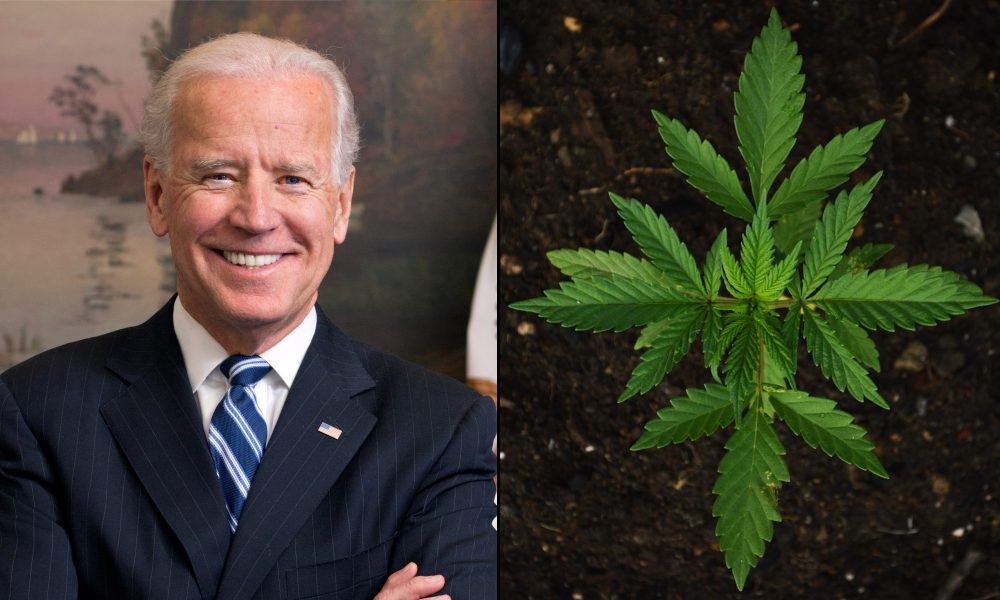BY
LZ GRANDERSONCOLUMNIST
APRIL 20, 2022 3:15 AM PT
Before I start talking about pot and why the federal prohibition should end, here are some numbers for you to consider.
Seventy-two U.S. senators accepted donations from the pharmaceutical industry ahead of the 2020 election. That number was 302 for the House.
Combined, that’s more than two-thirds of Congress.
If that makes you sick to your stomach, you might want to sit down for this: More than 2,400 state legislators around the country cashed checks from drug lobbyists,
including 82% of state lawmakers in California, which has a deep blue legislature. That’s on par with 84% of lawmakers in Louisiana,
a state redder than Mississippi, in case you are tempted to see this as a partisan problem.
In 2021, the lobbying industry broke its overall record —
eclipsing $3.7 billion — with experts pointing to Congress’ renewed effort to lower prescription costs as the primary driver behind the spike in pharma spending. Apparently, some people are happy with the status quo and are willing to fight for it.
For the rest of us,
a recent study from Cornell University might offer some relief. Researchers looked at Medicaid prescription data between 2011 and 2019 and found there was a decline in drug usage among Medicaid enrollees with access to recreational marijuana. We’re talking drugs to treat pain, depression, anxiety or help with sleeping, you know, the kind with television commercials.
The report,
published in the Health Economics journal on Good Friday (do with that what you will), said that its “results suggest substitution away from prescription drugs and potential cost savings for state Medicaid programs.”
I wonder how Big Pharma took the news. It is already spending more than any other industry to fight cost-cutting measures. Now every marijuana dispensary or grower in America is potentially a threat.
Shyam Raman, one of the study’s researchers, also said the results “indicate an opportunity to reduce the harm that can come with the dangerous side effects associated with some prescription drugs.” (Think about that laundry list of awful side effects we typically hear at the end of those commercials.)
Yes, it’s important to point out that just because an elected official accepts money from lobbyists doesn’t automatically mean they are in anyone’s pocket. It is also important to point out that lobbyists don’t donate money in hopes of having less influence.
Maybe it’s just misfortune that prescription drug spending in the U.S. is about
twice that of comparable nations, according to the Organization for Economic Cooperation and Development. Maybe it’s just luck that for 17 of the world’s top 20 prescription drugs, pharmaceutical companies
made more from U.S. sales than sales from all the other countries combined. Or maybe making donations to more than 60% of members of Congress has its benefits.
The question now is: How much more is Big Pharma willing to spend to keep things as they are? In 1960, national health expenditures represented 5% of GDP. Today, it’s at an all-time high of 19.7%. Last September, when the Democrats’ proposal to cut prices faltered in a House committee, two of the three moderates who voted against it received more than $100,000 each from the drug lobby,
according to a Stat analysis.
Back to pot.
Earlier this month the House passed the
MORE Act, a bill that would remove marijuana from the list of banned controlled substances, thus ending prohibition. It passed
220 to 204, mostly along party lines. The last time the bill passed the House, the Senate did not take it up. This time Senate Majority Leader Chuck Schumer had
promised to file his draft legislation to end prohibition — the Cannabis Administration and Opportunity Act — in April, but now says he will do so before the August recess, presumably to either try to gain more support or use it as an election issue for the midterms. Regardless of when it’s introduced, it’s doubtful 10 Senate Republicans will support the effort.
This is why we should be keeping our eyes on the money. Big Pharma was already on red alert with rumblings of price-cutting legislation. Now on the heels of studies that found a
drop in prescription drug usage among Medicare enrollees with access to medical marijuana comes a report of a similar pattern in recreational usage. Ending prohibition could pose a significant challenge to drug industry leaders with shareholders consumed with the bottom line. Could this be part of the reason why Congress is in no rush to do so?








